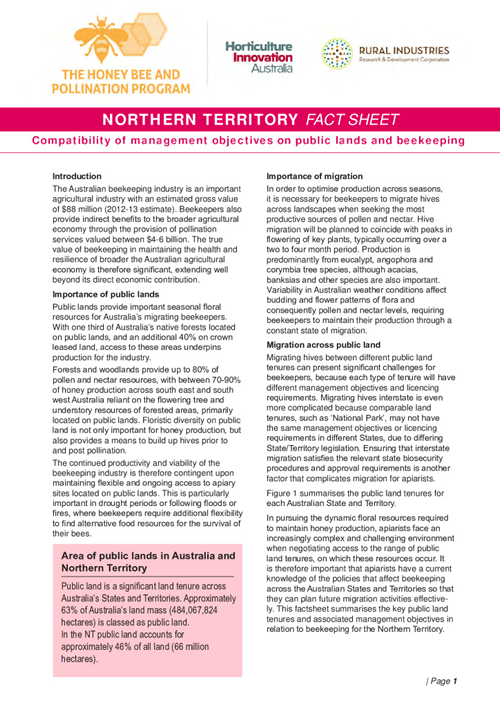Determining the impact of Varroa on virus transmission in Australian bees
This research aimed to contribute to ongoing surveillance of the Australian honey bee virus landscape as varroa establishes and spreads.
 HONEY BEE & POLLINATION
HONEY BEE & POLLINATION 
Published: 26 Mar 2015
Author(s): Salvin, S
Download report PDF
DownloadDespite the small size of the beekeeping industry in the Northern Territory, public land remains an important resource. This is particularly true during the crucial periods of hive build up prior to and post pollination. Whilst beekeepers derive a direct benefit from accessing this resource, pollination-reliant industries also derive substantial indirect benefits from such access.
The management objectives for public land in the Northern Territory are defined in the legislation under which the land tenure has been established and/or in specific plans of management. Public land is typically managed to meet a range of community, recreational, educational, commercial and conservation objectives.
The compatibility of beekeeping on public lands is largely determined by the anticipated impact that the activity will have on the other prescribed uses. In some cases, public land sought by beekeepers in the Northern Territory will be subject to few competing uses such as pastoral estate, which increases the chance of complying with management objectives.